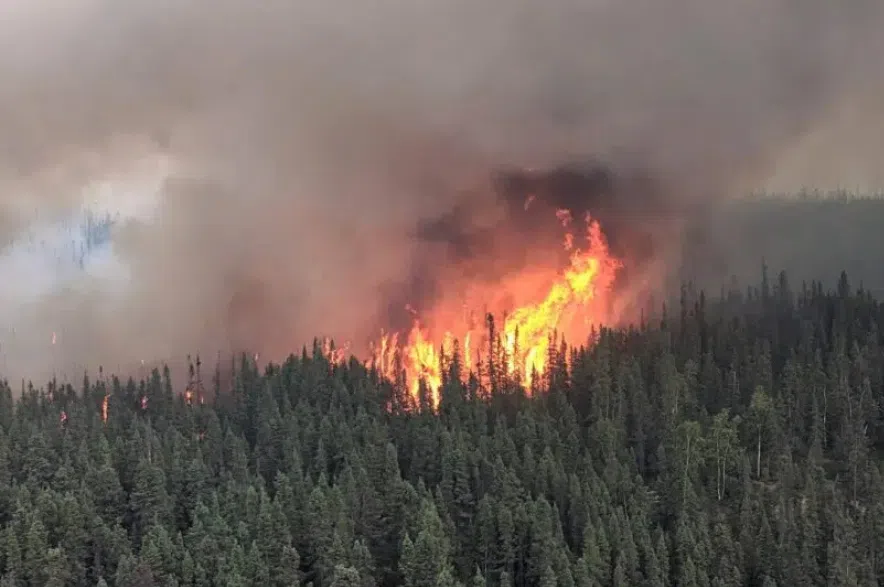As wildfires continue to sweep across northern Saskatchewan, the toll is mounting. Not just in evacuations and lost homes, but long-term damage to the province’s forest industry.
Carl Neggers, CEO of Forest Saskatchewan, says two of the largest fires, the Shoe Fire and the Ditch, have scorched 900,000 hectares of forest, an area roughly 40 times the size of Saskatoon.
According to Neggers, “Saskatchewan’s forestry sector harvest around 23,000 hectares per year. That means this years wildfires have destroyed nearly 40 years of commercial timber.”
“We support 12,000 jobs in this province through forestry” Neggers said in a June 9 interview on the Evan Bray Show. “If it impedes allocation or limits access to alternative timber zones, that puts our workforce and mills at risk.”
Listen to the entire interview with Evan Bray here:
The damage, he says, extends well beyond the logging industry. Forest in the commercial zone are also critical for recreation, traditional land use and Indigenous communities.
Neggers, a former Windland firefighter himself, says Saskatchewan’s forest management strategy needs an overhaul if the province wants to avoid seeing these types of catastrophic losses.
“Trees are living organisms,’ he said “They age, and as they get older, they become more susceptible to fire, pests and disease. If we don’t manage that proactively nature eventually does, through wildfires”
Unlike B.C., Saskatchewan forests don’t contain much old-growth. Most in the province live about 100 years; spruce live to 120 or 150. Some areas, such as the Nesbitt forest near Prince Albert, are considered “aged out,” with infestations and declining health.
Read more:
- Firefighter hospitalized in Saskatoon after lung collapses while serving
- Sask. wildfire evacuees to receive extra $500 in provincial funding
- Air quality warnings linger, more rain coming for wildfire areas
“Some of our forests we know are, are aged out and susceptible.,” Neggers said “We don’t harvest in those areas commercially anymore, but that doesn’t mean we shouldn’t be doing something with them.”
He’s now calling for a “healthy forest vision and strategy,” a long-term plan involving provincial and federal governments, industry leaders, communities and Indigenous stakeholders. The goal: reduce the risk of wildfires before they start.
Neggers says Canada currently spends more than a billion dollars each year on wildfire suppression. In Saskatchewan, that cost reaches hundreds of millions.
“We’re spending everything on suppression and recovery” he said “We should be shifting part of that into prevention.”
He pointed to improved harvesting strategies, fuel management near communities, and public education as ways to make a difference
“We need to stop thinking of wildfires as an unavoidable disaster and start treating it like a preventable risk,” Neggers said
The Saskatchewan Public Safety Agency continue to provide wildfire updates, and a province-wide fundraiser for wildfire relief called the Saskatchewan Day of Caring is scheduled for Thursday, June 12. All Donation will be matched by the federal government.











